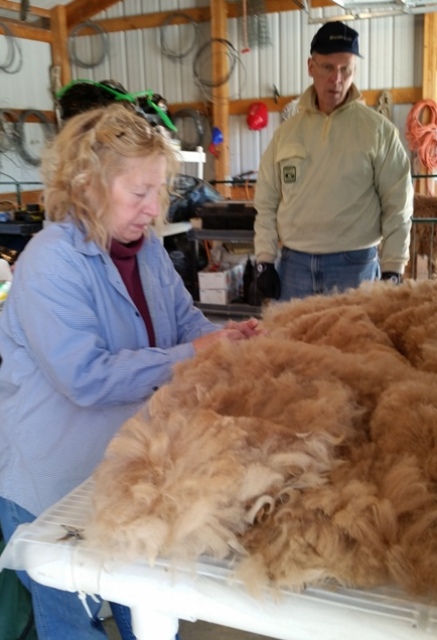About Grandview Alpaca Fiber Studio and Our Alpaca Fiber
In the fall of 2017, after 19 years of raising and breeding alpacas and 24 years of operating a small U-Pick apple orchard in Missouri, I retired from all the hard work, sold my herd and my farm and packed up my things and brought with me enough alpaca fiber to last my lifetime. I moved near one of my sons in Zionsville, IN. I was attracted to the Nashville, IN area because it is so unique and I like country living and can continue to felt, spin, weave and knit and have an interesting outlet for my products.
The Story Behind It All
From 1998 to 2017 I had a colorful alpaca herd at my farm in Mexico, MO, as they come in 22 shades from beige to black with 20 shades in between.. During that time I raised and boarded as many as 80 alpacas. We would shear them once a year in mid to late April as their fiber can grow as much as a quarter of an inch each month. Nursing and pregnant mothers produce less fiber as most of their energy goes into producing milk for the cria who nurse for approximately 6 months. Their fur coats can be very thick and overly warm during our hot summer months and could possibly cause heat stroke if they were not sheared, especially on the dark alpacas. In Peru, Chili and Bolivia they live in the high Andes Mountains where it is cool during the day and cold at night and most are sheared ever other year. In Chili and Bolivia you see more colored alpacas. Their fiber is mostly hand spun and made into apparel by the natives. In Peru the herds are mostly all white as their fleece is sold to large fiber mills, dyed and processed into colorful clothing. Peru’s economy is mainly alpaca and pima cotton mills that turn their finished goods into luxurious clothing.
I use all their fiber and send most of it out to get processed as hand spinning, carding and washing fiber is time consuming and labor intensive. I generally now work only with raw unwashed alpaca fiber when I am wet felting or hand spinning. Wet felting actually washes the fiber as one works with it. After I’ve spun yarn I wash it. It is much easier that way. I get my baby alpaca fiber and fine adult fiber spun into yarn and roving from a fiber mill in Kansas. When the yarn returns from the processor I rewash and permanently moth proof it. My rug yarn is processed in Texas and Iowa. It is made from the coarser fiber on the upper leg, chest and on the lower sides of the alpaca. Tennessee and Iowa also turn my seconds into batting which I use for felting projects.
I fell in love with their crimpy fiber as it is softer than cashmere, light weight, very warm, water resistant and for most it is allergenic. If you were to look through a microscope you would see that their fiber strands are straight with no barbs as in wool. Thus, no place for dust or dander to settle in. In the past, I used the scrap fiber as insulation in the attic of my shop. Alpaca fiber has a high R Value and it will not burn. The birds also like the scrap for their nests. At my last shearing it had been a windy day and a lot of the scrap on the floor blew out into the yard. I went to clean it up the next morning and the yard was full of birds. Apparently they were in the process of nest building. Word got out and they cleaned up everything for me.



